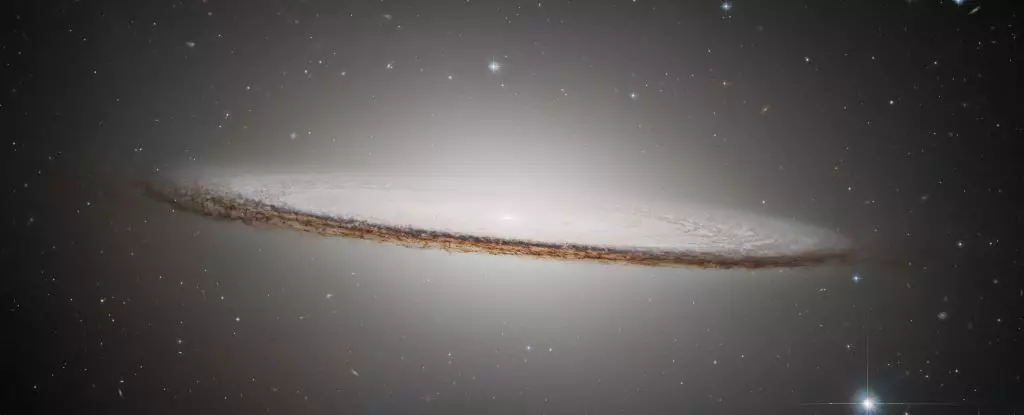In the vast expanse of the universe, the Sombrero Galaxy (Messier 104) emerges as a fascinating subject for both amateur stargazers and professional astronomers alike. Celebrated as one of the standout features of the night sky, this peculiar galaxy captivates the imagination not solely due to its stunning appearance but also for its enigmatic blend of characteristics that defy conventional categorization. Positioned approximately 31 million light-years away within the constellation Virgo, this impressive celestial body exhibits striking features that make it thoroughly intriguing.
A Unique Structural Blend
The Sombrero Galaxy presents a distinctive dichotomy that is both a blessing and a curse for astronomers attempting to classify it. Unlike typical galaxies that comfortably fit into either spiral or elliptical categories, the Sombrero walks the line between the two, showcasing a combination of structure and diffusion. Its grand disk shape features a radiant core that draws the eye, yet it is surrounded by thick dust lanes that appear almost like a veil of mystery—akin to the brim of an ornate sombrero. The aesthetic beauty of this alignment prompts the question: what secrets lie within its depths?
New Horizons Through Reprocessing
The sustained interest in the Sombrero Galaxy was further ignited by the Hubble Space Telescope’s recent image release, celebrating three-and-a-half decades of its exploration in the universe. With new processing techniques applied to the original captures from 2003, deeper insights into its intricate star formations and cosmic background have emerged. We are once again reminded of the pivotal role that technology plays in expanding our understanding of celestial phenomena. The images not only provide delightful visual stimuli but also challenge scientists to unearth the complexities and nuances of this magnificent structure.
Star Formation Dynamics
Interestingly, despite being a radiant beacon of light packed with an array of stars, the Sombrero Galaxy is relatively subdued when it comes to active star formation. Producing only about one solar mass worth of new stars annually, its relatively calm developmental pace contrasts sharply with the stellar furor seen in other galaxies. This low rate raises enticing questions regarding the galactic ecosystems that impact star birth and the peculiar factors that contribute to the unique characteristics of the Sombrero.
The Heart of Darkness
Diving deeper into its structure, observatories, including the James Webb Space Telescope, unveil even richer compositions. It has unveiled a central bulge that suggests the presence of a supermassive black hole with a staggering mass roughly equivalating to nine billion times that of our Sun. This revelation opens discussions on the relationships between black holes and their host galaxies, further demonstrating how interconnected cosmic behaviors unveil the universe’s grand design.
As our quest for cosmic knowledge continues, the evolving narrative of the Sombrero Galaxy serves as both a tribute to the wonders of astronomy and a reminder of how much there is still to explore. The galaxy’s allure lies not just in its beauty, but in its complexity, which challenges our understanding of the universe and reinforces the notion that the cosmos holds many more secrets waiting to be discovered.

